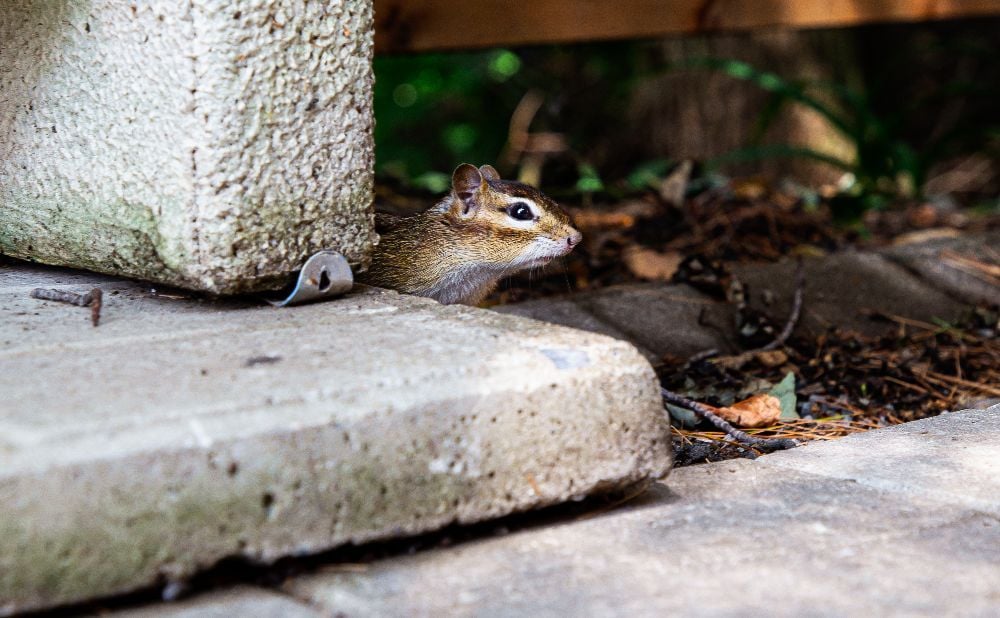
Have an issue with the concrete around your home? Concrete leveling may be the quick, convenient, and cost-effective solution you need for your concrete problems.
If you’ve noticed a problem or two with the concrete around your home, chances are that you’ve felt a little overwhelmed when looking into the options you have for repair.
Maybe you’ve asked yourself if it would be better to ignore the problem altogether rather than sift through the potentially expensive, messy, and time-consuming fixes.
Luckily, not all repair options are that way. Concrete leveling is a quick, convenient, and cost-effective solution to many of the common problems homeowners face when it comes to their concrete. In fact, the majority of jobs are completed in one day and ready to use the following day.
At A-1 Concrete Leveling, we’ve seen it all, and with this experience, we’ve figured out what works and what doesn’t as far as concrete problems are concerned. In this article, you’ll find seven of the most common problems we see, and how they can be solved with concrete leveling.
1. Concrete Trip Hazards
Trip hazards occur when a concrete slab lifts or settles above or below the neighboring slab. The extra lip of material sticking up, created by the movement of the concrete slab, is a big safety concern, and one we get called to repair often.
Especially in the case of older loved ones, and even your own children running, jumping, and playing, you want to make sure that your concrete is free of any places where feet can snag and cause falls and injuries.
Concrete Leveling For Your Trip Hazards
To eliminate the trip hazards around your property, concrete leveling lifts each affected slab to return your walkway or other concrete sections back to smooth, level grades.
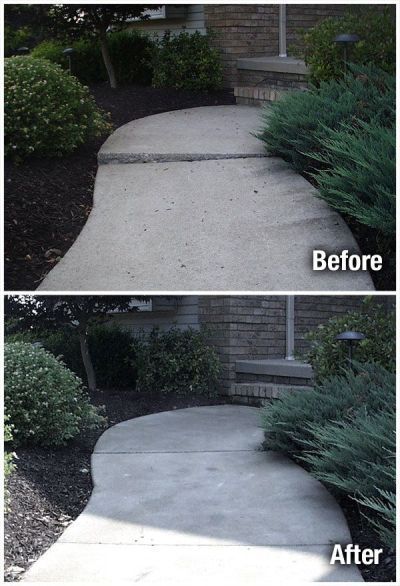
2. Uneven or Sinking Concrete Steps
Not only are the uneven steps leading up to your front door an eyesore, but they also pose a threat to everyone visiting your home. If someone isn’t paying close attention and misses the step with an uneven height, they could get badly hurt.
Uneven concrete step heights also commonly impact the results of home inspections. If your steps are sinking or uneven and you are planning on selling your home in the near future, it’s worth getting them fixed and back to the appropriate level.
Concrete Leveling For Your Uneven Concrete Steps
Uneven or sinking concrete steps can be easily lifted back into a safe position with concrete leveling. Rather than tearing everything out and repouring the steps, concrete leveling can bring your concrete back to life in less than a day of work.
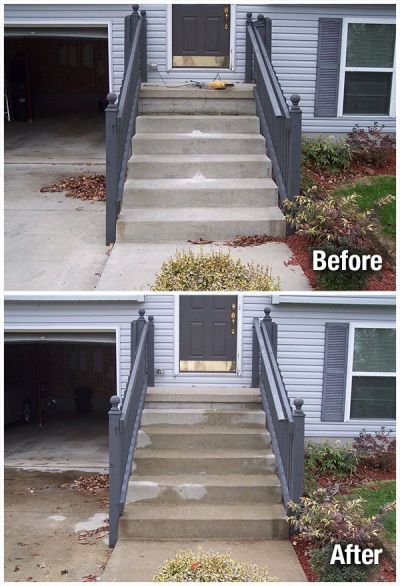
3. Water Flow Around Home or Retaining Wall
If you’re struggling with water pooling or flooding around your home, concrete leveling can help prevent the water from flowing toward your house. Fixing the slope of your concrete to run away from your house can help mitigate the problems that come with water, like erosion or damage to basements and foundations.
Concrete leveling can also help keep your retaining walls in good shape. If you have water that is flowing directly towards the retaining wall, chances are it will end up settling over time, which is an expensive fix.
Concrete Leveling For Water Flow Around Your Home
Leveling your concrete so that water flows away from houses or retaining walls can save you a lot of hassle, money, and time in the long run. Having a professional concrete leveling team come in and raise your slabs now can prevent compounded damage from the water around your home and property.
4. Voids and Empty Spaces
If you’ve found an empty space under your driveway that’s causing you to worry that it might collapse every time you drive over it, concrete leveling can help.
Empty spaces, also called voids, naturally open up underneath concrete slabs over time. Many times we are called to fill these voids as a measure to prevent future settling and to help keep animals from making homes under slabs.
Concrete Leveling For Filling Voids Under Your Concrete
Because concrete leveling works by injecting a leveling compound under the slab in order to lift it, the voids are filled naturally during the process. The A-1 limestone slurry mixture flows into the voids and fills them as the slab is lifted.
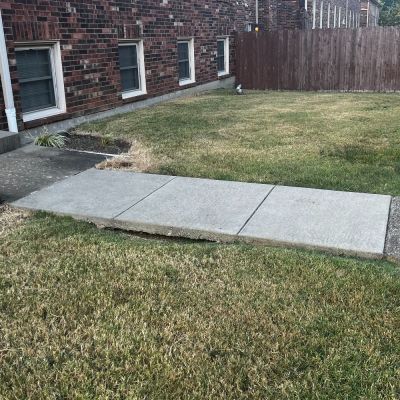
5. Unstable Concrete Slabs
Voids usually open up underneath a concrete slab because the slab is being supported by something like an adjoining piece of concrete, or it is rebarred into the foundation of a house. As the void continues to open underneath, it can strain whatever is holding the slab up, and eventually pull it down with the slab as it sinks.
Concrete Leveling For Stabilizing Your Slabs
Concrete leveling can be used to avoid this, as the leveling compound can be pumped under the slab in order to fill the void and stabilize it, preventing it from pulling on its neighboring slabs or foundation walls.
6. Pests Making Homes Under Concrete
If animals start making a home under your concrete slabs, they can bring many problems with them. Not only are the pests commonly found under concrete, like snakes, mice, foxes, woodchucks, and chipmunks, annoying and potentially dangerous, but they also erode away the base under your concrete as they create their homes, causing the concrete to settle.
Concrete Leveling For Removing Pests From Under Your Concrete
As pests burrow under your concrete, they create voids and empty spaces. This erosion is very detrimental to your concrete, as the voids can cause the slab to settle and sink over time. Concrete leveling can fill these voids and stabilize the concrete in order to prevent settling, or correct it if it does occur.
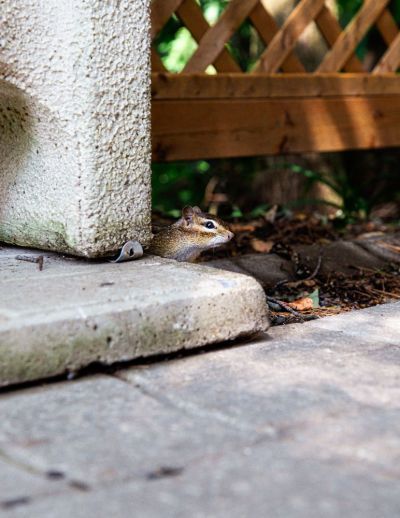
7. Leaning Light Posts, Mailboxes, and Fence Posts
Over time, light posts, mailboxes, fence posts, and other similar structures can start to lean or fall. Because these posts are secured into the ground with concrete, if that concrete shifts or settles, the post can go with it.
Concrete Leveling For Your Leaning Posts
This is a common problem that we are often called to fix here at A-1 Concrete Leveling, and it is usually easily fixable by pumping our leveling compound into strategic locations around the concrete to lift the mailbox, light, or fence post back up into the proper position.
Now What?
Do you have any of the problems mentioned above around your home? A-1 Concrete Leveling has been repairing concrete for over 30 years, and our knowledgeable leveling technicians can help you get your concrete problems under control.
Click the link below to request a free on-site consultation and cost estimate with a member of the A-1 Concrete Leveling team!
Want to know more about concrete leveling? Check out the following topics from our Concrete Academy:
Sarah Etler joined A-1 Concrete Leveling after receiving her Bachelor of Arts degree in English from Northern Kentucky University. As A-1's Content Marketing Manager, she works closely with industry experts to produce content that will best answer questions related to concrete repair and maintenance practices. Sarah loves living a life full of discovery and is excited every day to see what new things she can learn and share with those around her.
Topics: